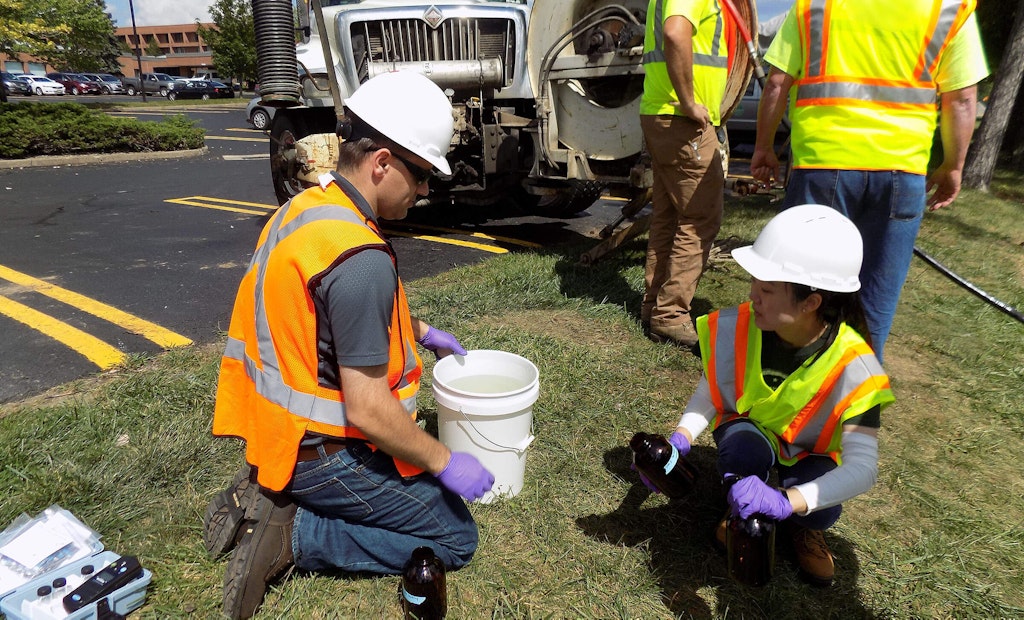
Andrew Whelton (left), an associate professor of civil engineering and environmental and ecological engineering at Purdue University, and his team of researchers recently released another report looking at the safety of the CIPP process. (Photo from Purdue University)
Interested in Relining/Rehab?
Get Relining/Rehab articles, news and videos right in your inbox! Sign up now.
Relining/Rehab + Get AlertsPurdue University researchers have released another study looking at the CIPP process and potential safety concerns.
Last year, a research team examined issues surrounding CIPP when using a steam-curing process. This time around, researchers focused on the use of CIPP in stormwater culvert repairs.
“While the technology has been around for 30 years, there are very few laboratory and field studies on possible environmental effects,” says Andrew Whelton, an associate professor of civil engineering and environmental and ecological engineering at Purdue University.
More research is needed to develop more definitive conclusions, researchers said, but in the course of the study, the team examined several water contamination incidents that had links to a stormwater CIPP project.
“We are continuing to investigate whether the 13 water contamination incidents we found are outliers or are typical of CIPP installations,” says Kyungyeon Ra, a graduate student on the research team.
For example, in one incident in Colorado, people reported an odor in the drinking water. Upon further investigation, the community discovered high styrene levels in the drinking water, and traced it back to an upstream stormwater culvert repair that used CIPP. Styrene was the chemical most often reported in the contamination incidents that were studied. Other chemicals that were sometimes found included acetone, benzene, and trimethylbenzenes.
Thirty-two states responded to the research team’s request for information about CIPP construction specifications. Of the respondents, four states required the temporary installation of materials upstream and downstream of a CIPP job site, three states required that the pipe not be returned to service for a specified amount of days after a CIPP installation, and four states required water testing before and after a CIPP installation.
Based on this most recent study, the Purdue University team has these precautionary recommendations for CIPP projects until more research is done:
- Use impermeable plastic sheets immediately upstream and downstream of the pipe to prevent materials from entering the environment.
- Divert water flow from the pipe until the resin has completely cured.
- Rinse new CIPP with water and collect the waste.
- Test nearby waters before and after the repair for a variety of chemicals, not only styrene.
The study was funded by state transportation agencies in Virginia, California, Kansas, New York, North Carolina, and Ohio under the Transportation Pooled Fund Program.
The full report can be accessed here.
Source: Purdue University





